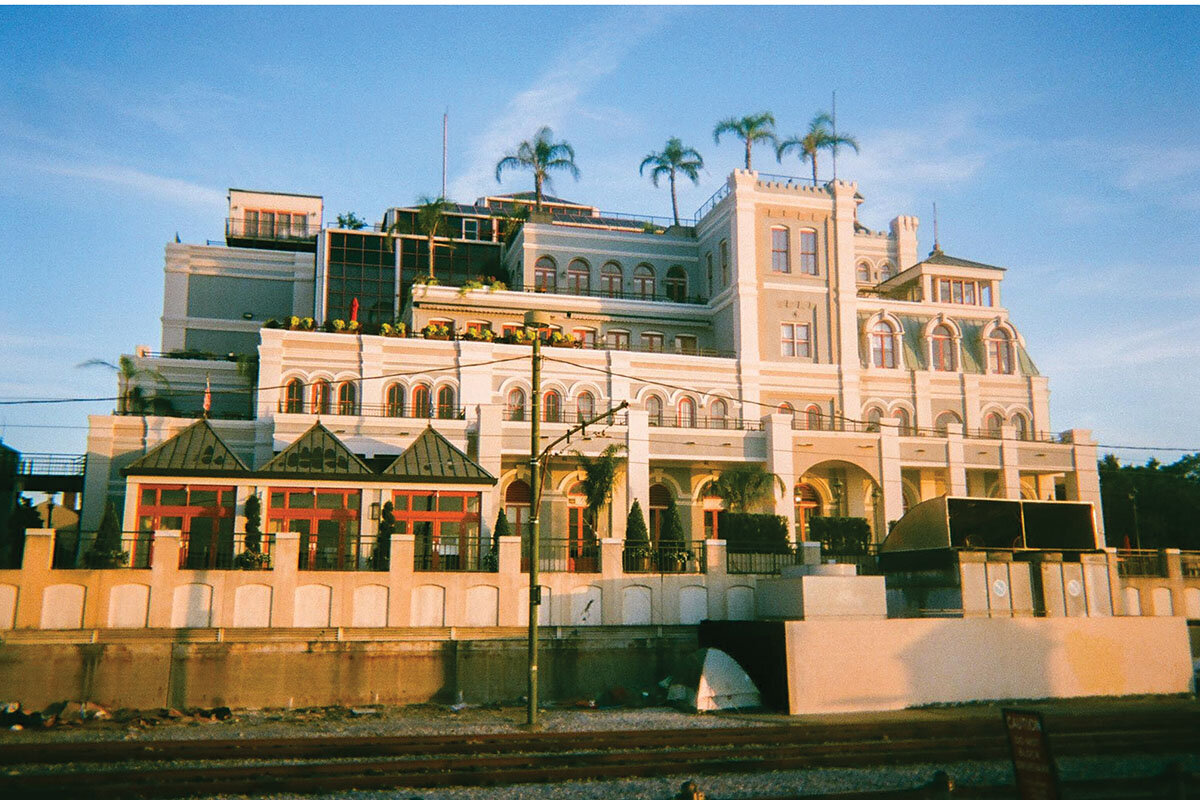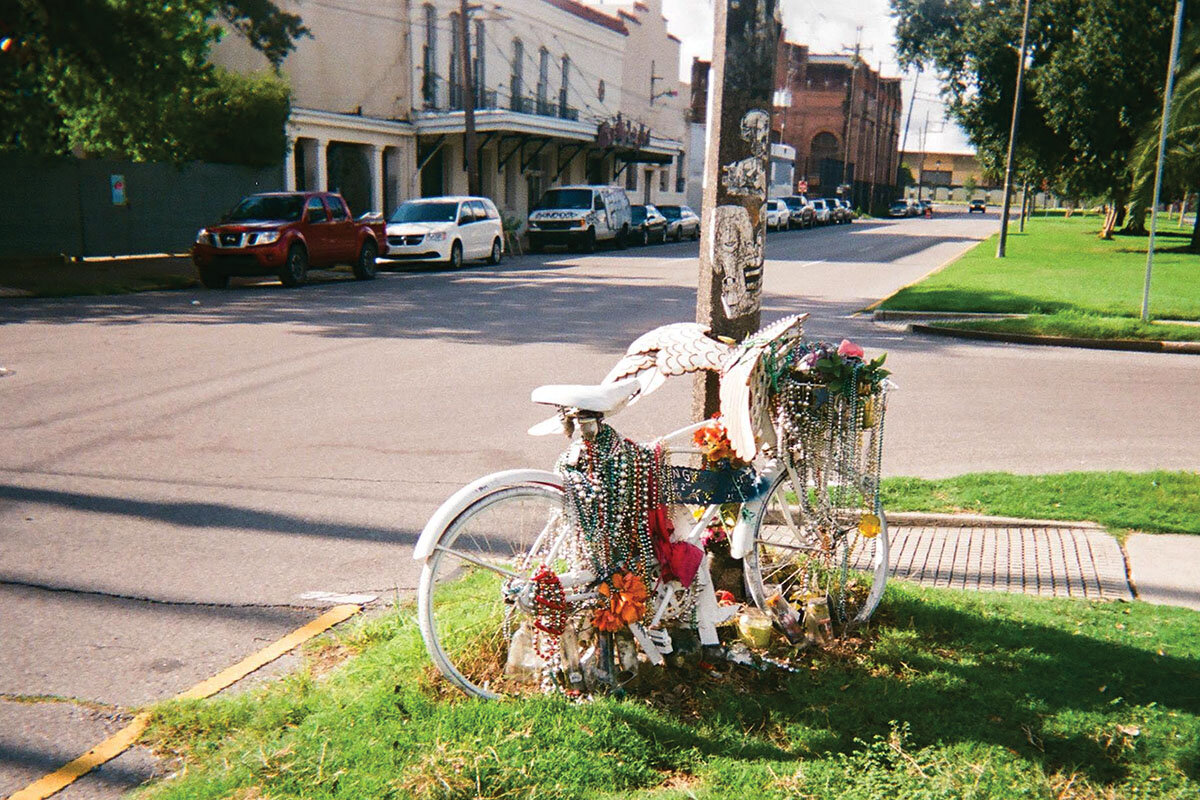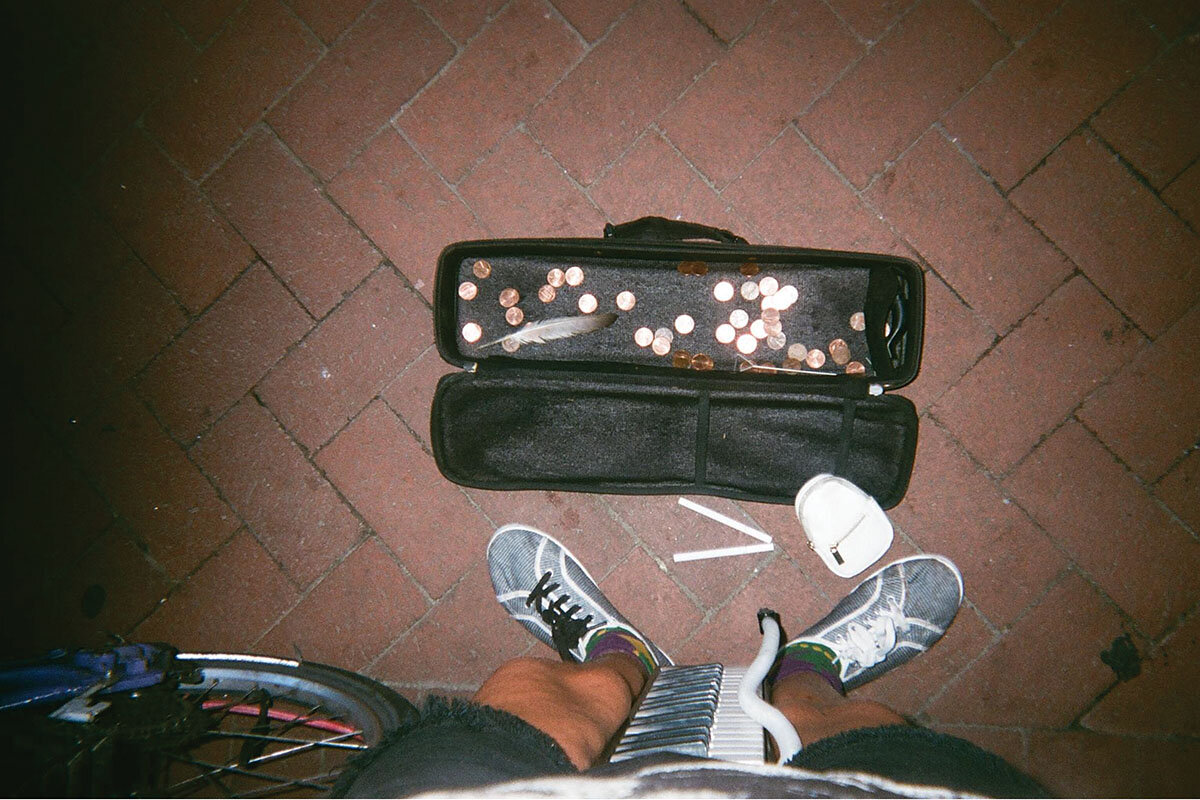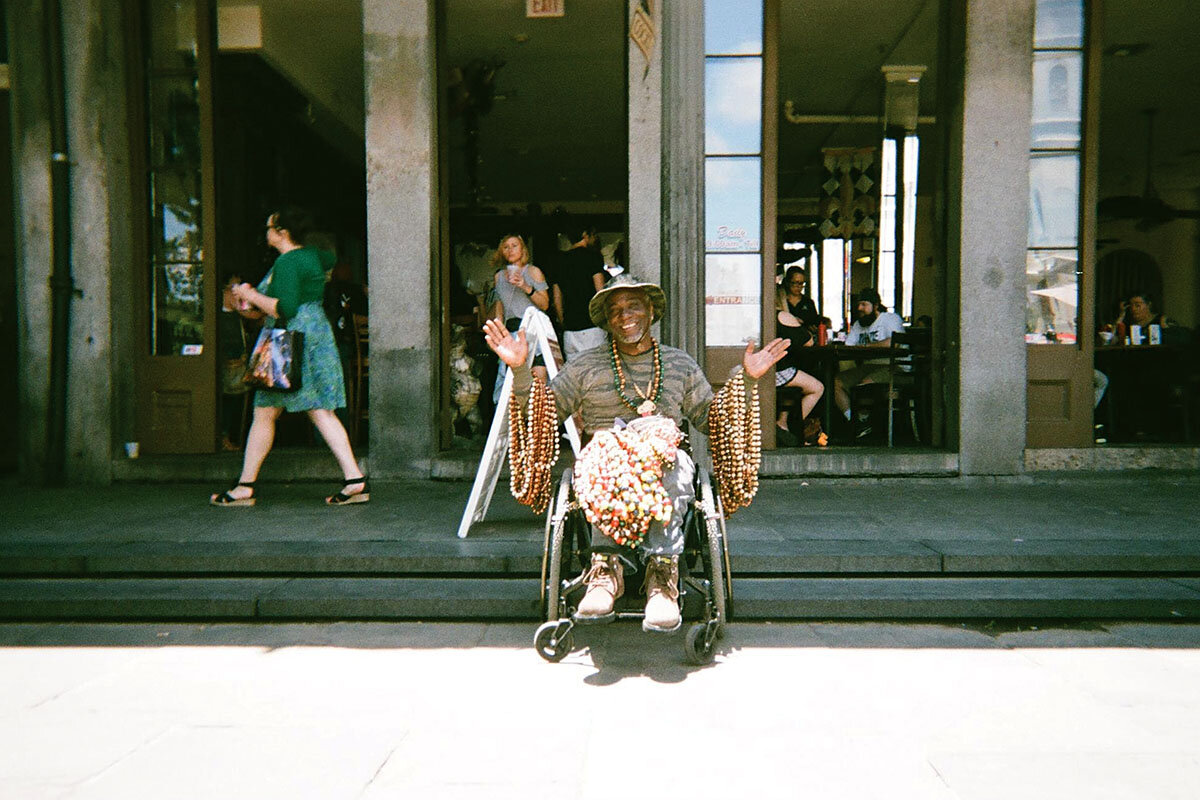Through their own eyes: How cameras empower the unhoused
Loading...
| New Orleans
Once Yvonne Schaad got sober, she avoided New Orleans’ French Quarter. It felt as if the Quarter and its raucous Bourbon Street were a person, someone she could no longer look in the eye. Before, she had panhandled there to help make ends meet while living on the Crescent City’s streets.
Ms. Schaad’s bout with alcoholism ended seven years ago. For six years now, she’s been housed.
The catalyst was someone placing a camera in her hands.
Why We Wrote This
When disadvantaged individuals document their own reality with pictures they take themselves, the resulting images can widen the perspectives of both photographer and viewer.
The camera came to Ms. Schaad through the nonprofit and its MyNew Orleans Photo Project, co-founded by Heather Milton. The aim is simple: pass out disposable cameras to locals previously or currently affected by homelessness, who are tasked to venture out into the city to capture it through their eyes. The questions at hand: What do you love about New Orleans, and what is it like to be you on a day-to-day basis?
Ms. Milton has sat down with each photographer to scroll through the images together. The results, she says, are emotionally striking.
For many of the participants, the experience is life-changing, too.
“When I first started with the photo project, it kind of boosted my self-esteem and helped me be around more people,” Ms. Schaad says. “Now, I have a job. I’ve got my driver’s license.”
It was the spark that reignited her life, she adds.
New Orleans is a photogenic city. Its old, iconic buildings are idyllic, and its gastronomical traditions and history divine. But in between the city’s beauty and folklore is an underbelly of poverty and neglect, with the unhoused population living in limbo between them.
That is, in part, why participatory photography was a concept that piqued Ms. Milton’s interest. Not long before she and project co-founder Elizabeth Perez launched it in 2017, Ms. Milton had gone back to graduate school in Tulane University’s disaster resilience program. Around that time, a “photovoice” project – a type of community-based, visual research methodology gaining popularity worldwide – caught Ms. Milton’s eye when it went viral from London that year. She reached out for guidance, and Ms. Milton says New Orleans soon became the first communitywide photovoice initiative in the United States.
Locally, the project has been a success.
The main public library in New Orleans recently finished showing an exhibit of its work. And in its first few years, a local panel picked the top photos for an annual calendar that was sold at art markets, or on the streets by the participants themselves to help them personally profit, too.
The work was building on the fact that “their thoughts, their images, their lives are important,” Ms. Milton says. “My job was to amplify their voices and thoughts through the stories and the pictures.”
Some of those stories stuck with her.
There was Thomas’ photo of the old Jackson Brewing Co. – a former beer production facility that’s been repurposed into a multiuse development. Set within a shaded corner underneath the building’s wide arches is a small tent, where an unhoused person lives.
“That’s where he [Thomas] slept every night,” Ms. Milton says.
The photo that one unhoused participant took of a family in City Park – as the family stood together, dressed in their Sunday best – captures the distance the photographer felt.
“It’s something that’s not accessible for him,” Ms. Milton says.
Another image is of a water spigot sticking out from a wall. In Ms. Milton’s interview with the participant, she remembers him talking about the importance of water in his everyday life. He owned a thermos bottle. Each morning he’d wake up thirsty and hot, but he knew where to find water – at one bar where employees would allow him to fill up every night – so he at least had cold water in the morning. When the pandemic forced the city to shut down some of its public water fountains, his life as an unhoused person was further complicated.
“He talked – I don’t know – for half an hour about Lowcountry crab boils,” Ms. Milton remembers, noting how the man formerly worked in a kitchen. “Part of it was just him thinking through memories that were really good. For him, it was an abundance of food and water.”
For Ms. Schaad, the project forced her to live in a way that was more than just survival. “Sometimes you’re living in it,” she says of the city. “But you don’t look at it.”
Listening to unhoused individuals “without judging them is immeasurable,” Ms. Milton says. “This is a group that’s used to being treated as though they’re invisible. When you give them your full attention, and you really hold your gaze, everything is on them – it does something for them.”
Juston Winfield had been unhoused for about four years before he joined the photo project. He had only limited experience in photography, but he was among the most excited to partake.
“It shook the world for me,” Mr. Winfield says. “Six years ago, when I was homeless, that’s how I got my break. It went from me taking pictures to me painting.”
In recent months, Mr. Winfield has begun working on consignment with the New Orleans Museum of Art, where he hopes to have his artwork eventually featured.
The experience helped break him out of, as he calls it, “a cycle that most homeless people do.” You wake up. You find a place to shower, if possible. Then you continuously eat all day, because you never know when your next meal will come. “If you don’t got no task, you’re going to burn the majority of your day walking around and eating,” he says. “The project was a task for me to get up in the morning and try to go catch something with certain sunlight, certain shade.”
The pandemic has forced Ms. Milton to put the project on hold. She’s relocated to her native Kansas to help take care of her parents. But given the project’s contributions to New Orleans’ unhoused community, she’s currently trying to see if a local shelter would be interested in taking it over.
Ms. Schaad hopes to see it continue. “Being homeless, it’s tough luck,” she says. “Then someone gives you a camera, and you look at the pictures and you’re like, ‘Wow, I can really do something.’”
She graduated from Delgado Community College’s culinary management program last year. She’s waiting until Mardi Gras concludes in two weeks to apply for vendor permits – it’s a long line this time of year – but she hopes to set up a fresh hot pretzel stand on the sidewalk of music-friendly Frenchmen Street.
Ms. Schaad volunteers with the local unhoused community when she can. “It’s nice to be able to give back,” she adds.
As Ms. Milton considers the experiences of Ms. Schaad and Mr. Winfield, among the many others who participated in the photo project, her takeaway is simple.
“People are more resilient than we give them credit for,” she says.







